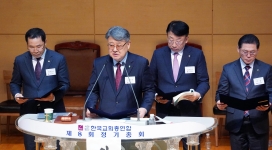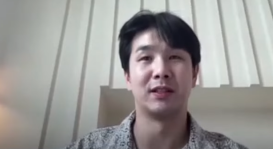
How heavy is a star, and how do you weigh it? Arithmetics are able to provide the answer, but it is definitely not an easy road. The Hubble telescope has finally succeeded in performing the ‘impossible’ experiment as deemed by none other than Nobel Prize winner Albert Einstein himself, that is to weigh a star. How did the Hubble telescope achieve this feat?
For starters, the Hubble telescope looked at history and the notebooks of Einstein, making use of a technique that the physicist actually penned down, although there was a tiny disclaimer at the end of it, citing that it would be ‘impossible’ for mankind to achieve the kind of technological competence to do so, and one that we would have “no hope” of using.
Looks like the Hubble space telescope had managed to prove everyone wrong, even the late Einstein himself. I suppose that Einstein would have been proud and happy to be proven wrong this time around. The experiment involves observing an Einstein ring, which is a situation when a galaxy bends while magnifying the light from a more distant one, and this is something that can be predicted via Einstein's general theory of relativity.
Astronomers have successfully harnessed the power of the Hubble telescope to check out light from a single star being bent by another star. This happened recently, where Hubble spotted a dead star that was located around 18 light years (a light year is the amount of distance that light travels within a year, amounting to nearly 6 trillion miles) away. The dead star was warping the light of an even farther star which looked as though it passed behind.
Einstein claimed that his general theory of relativity would be able to prove such a thing happening, but was rather pessimistic that scientists had “no hope” of actually checking it out with their own eyes. Do bear in mind that such pessimistic claims were made close to six decades before the Hubble telescope was launched. With the Hubble telescope playing eyewitness to this phenomenon, astronomers were excited to get down to work, including obtaining the mass of the star.
Kailash Sahu of the Space Telescope Science Institute, who is also the lead author of a report that described the published observation in the journal Science, said, “I have been thinking of this problem for many years. We were not sure if we could succeed, but it was definitely worth trying.”
Known as gravitational microlensing, this star-crossed effect was seen earlier via our very own sun, which is a star in itself. The observation was done in the total solar eclipse of 1919, as Arthur Eddington measured the positions of stars that were located close to the edge of the darkened sun. He noticed that the sun’s gravity managed to influence the distant starlight.
Astronomers have also made use of a similar train of thought when it comes to discovering previously unknown exoplanets and invisible dark matter, as these are also able to bend light that comes from different background objects. This is the very first time that a tiny star was seen to bend light from another.
524
Where does this particular discovery leave mankind then? It is definitely a remarkable achievement, but hunting down the right star to function as the lens is also tricky. Sahu explained, “Imagine a firefly moving from one side of a U.S. quarter to the other side. You have to detect this movement from 1,500 miles away. Second, there is a bright light bulb [the white dwarf] next to the firefly. And you have to detect the small movement of the firefly in the glare of the bright light bulb.”
This fortuitous moment must be attributed to the greatness of our God (who even Einstein acknowledged), who has clearly set everything in the heavens and on earth in its place since creation. It is hoped that this confirmation of Einstein’s calculations will be able to be used to measure what the other stars’ masses are.







